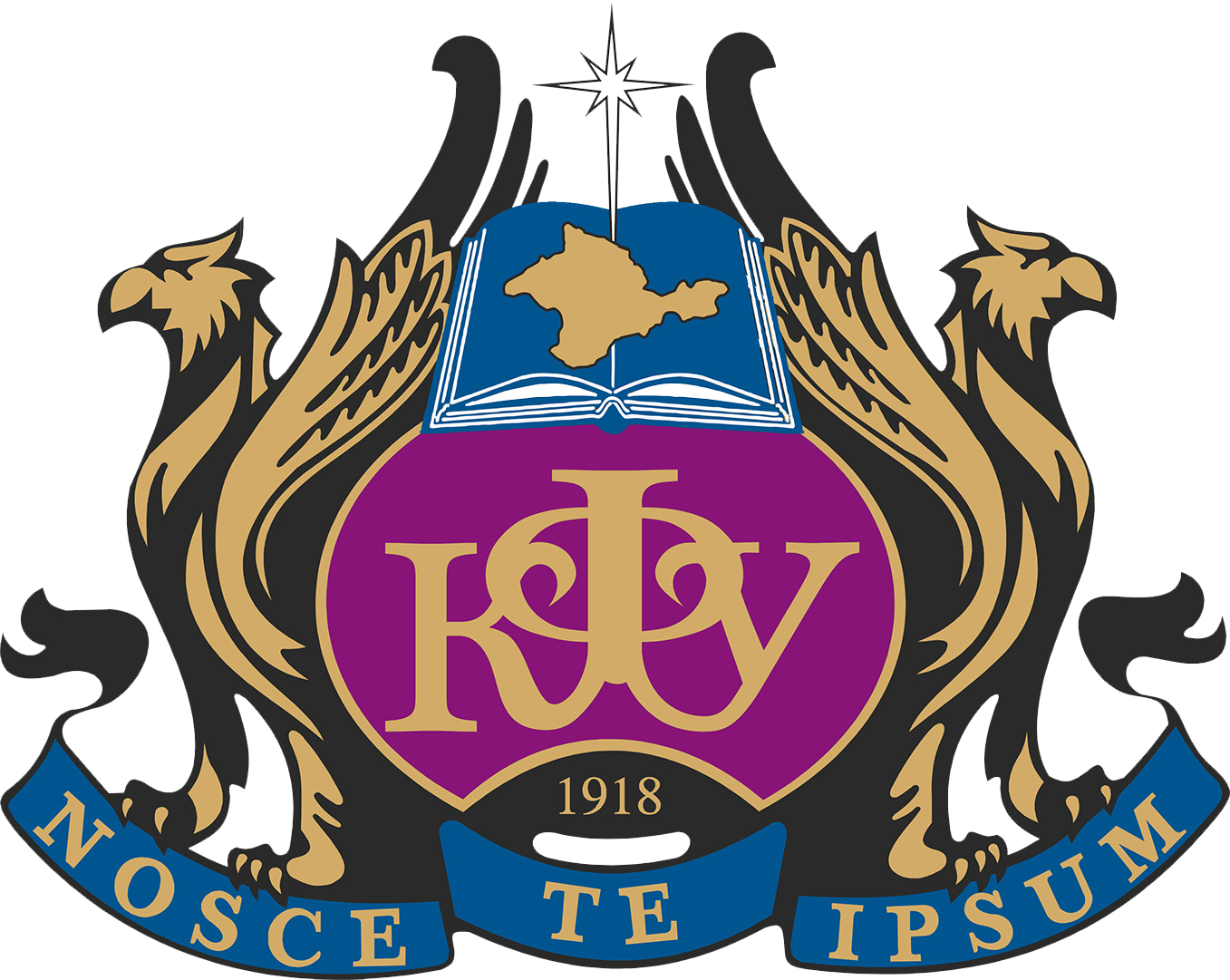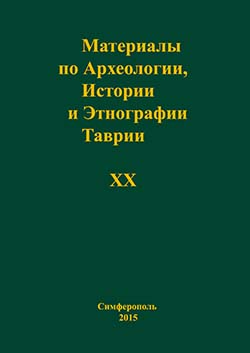UDC 902
The archaeological researches of the Crimean ulus of the Golden Horde discovered a multitude of finds in the cultural layers from the late fourteenth and early fifteenth centuries, particularly building ceramic ware with footprints of animals. Such finds not only reflect the level of development of building technique, but also allow the one to determine the species composition of the fauna in the mediaeval Crimea, to amend the information on the economic and industrial activities of the population of Solkhat in the Golden Horde period. Among the footprints on bricks there are traces of canines (domestic dog and wolf), felines (cat), and artiodactyls (goat). Most of the footprints, 14 specimens, belong to canine animals, cat footprints are documented on four bricks, and only one artefact shows a footprint of goat’s hoof. This statistic is indirectly confirmed by the analysis of osteological materials, with a significant percentage of dogs’ remains and a little less of cats’. Goat’s bones are also rare; small cattle is mostly represented by sheep’s bones, the breeding area of which probably does not coincide with the place where Solkhat building ceramics were produced. The building ceramics with footprints of animals’ paws and hoofs originating from the excavations of the mediaeval settlement of Solkhat is published for the first time.
Golden Horde, Crimea, Solkhat, building ceramics, footprints of animals, archaeozoology
1. Antipov I.V. Some problems in the study of ancient Russian building ceramics. Iz istorii stroitel’noi keramiki srednevekovoi Vostochnoi Evropy. Arkhitekturno-arkheologicheskii seminar [From the history of building ceramics of medieval Eastern Europe. Architectural and archaeological seminar], St. Petersburg, 2003, pp. 124-129.
2. Elshin D.D. New studies of ancient Russian plinth: results and prospects. Arkheologіia i davnia іstorіia Ukrainy. Vyp. 1. Problemi ta davn’orus’koї ta seredn’ovіchnoї arkheologії [Archeology and ancient history of Ukraine. Vol. 1. Problems of old Russian and middle Russian archeology], Kiїv, 2010, pp. 395-407.
3. Zavadskaia I.A. Roof Tiles of Group Ia in Eski-Kermen: On the Question of the Production Site. Materialy po arkheologii, istorii i etnografi Tavrii [Materials in archaeology, history and ethnography of Tauria], 2017, vol. 22, pp. 160-186.
4. Kramarovsky M.G., Seydaliev E.I. A Türbe of the late fourteenth or early fifteenth century in Solkhat (new materials). Zolotoordynskoe obozrenie [Golden Horde review], 2020, vol. 8, no. 4, pp. 714-736. DOI:https://doi.org/10.22378/2313-6197.2020-8-4.714-736
5. Kramarovsky M.G., Seydaliev E.I. Kurshun-Jami Mosque (Crimea, 14th Century) and the Seljuk Tradition of Anatolia. Arkheologiia Evraziiskikh stepei [Archaeology of the Eurasian Steppes], 2022, no. 4, pp. 242-249. DOI:https://doi.org/10.24852/2587-6112.2022.4.242.249.
6. Moiseev D.A. Medieval plinth of the Mangup settlement. Drevnosti [Antiquities], Har’kov, 2013, vol. 12, pp. 179-192.
7. Moiseev D.A. Kul’turnye i ekonomicheskie sviazi Iugo-Zapadnogo Kryma i Tamanskogo poluostrova v IX-X vv. na primere arkheologicheskogo izucheniia tsentra po proizvodstvu stroitel’noi keramiki v balke ruch’ia Suatkan (Krym) [Cultural and economic relations of the South-Western Crimea and the Taman Peninsula in the 9th-10th centuries. on the example of archaeological study of the center for the production of building ceramics in the beam of the Suatkan stream (Crimea)], Simferopol, 2017, 208 p.
8. Rappoport P.A. Stroitel’noe proizvodstvo Drevnej Rusi (X-XIII vv.) [Construction production of Ancient Rus’ (10th-13th centuries)], St. Petersburg, Nauka Publ., 1994, 61 p.
9. Singatulin R.A. Golden Horde technologies: bricks from Ukek. Arkheologiia Evraziiskikh stepei [Archaeology of the Eurasian Steppes], 2021, no. 3, pp. 273-284. DOI:https://doi.org/10.24852/2587-6112.2021.3.273.284.
10. Fedorov-Davydov G.A. Zolotoordynskie goroda Povolzh’ia [Golden Horde cities of the Volga region]. Moscow, Moscow State University Publ., 1994, 228 p.
11. Tsalkin V.I. Pets of the Golden Horde. Bjulleten’ moskovskogo obshhestva ispytatelej prirody. Otdel biologii [Bulletin of the Moscow Society of Naturalists. Department of Biology], 1967, vol. 72, no. 1, pp. 114-130.
12. Yavorskaya L.V. Cattle breeding production of Madzhar during the Golden Hord times: meat products and crafts. Arkheologiia Evraziiskikh stepei [Archaeology of the Eurasian Steppes], 2018, no. 5, pp. 68-72.
13. Yavorskaya L.V. Archaeozoological Research of the Settlement Zhemchuzhina-1 and Economic Issues of South-East Crimea in the Golden Horde Period. Povolzhskaja arheologija [The Volga River Region Archaeology], 2020, vol. 2 (32), pp. 170-180.
14. Yavorskaya L.V., Antipina E.E. Osteological collection from the Golden Horde Azak (Vasilieva St., 81B, 2014). Istoriko-arkheologicheskie issledovaniia v Azove i na Nizhnem Donu v 2013-2014 gg. [Historical and archaeological research in Azov and the Lower Don in 2013-2014], 2016, vol. 29, pp. 376-391.





